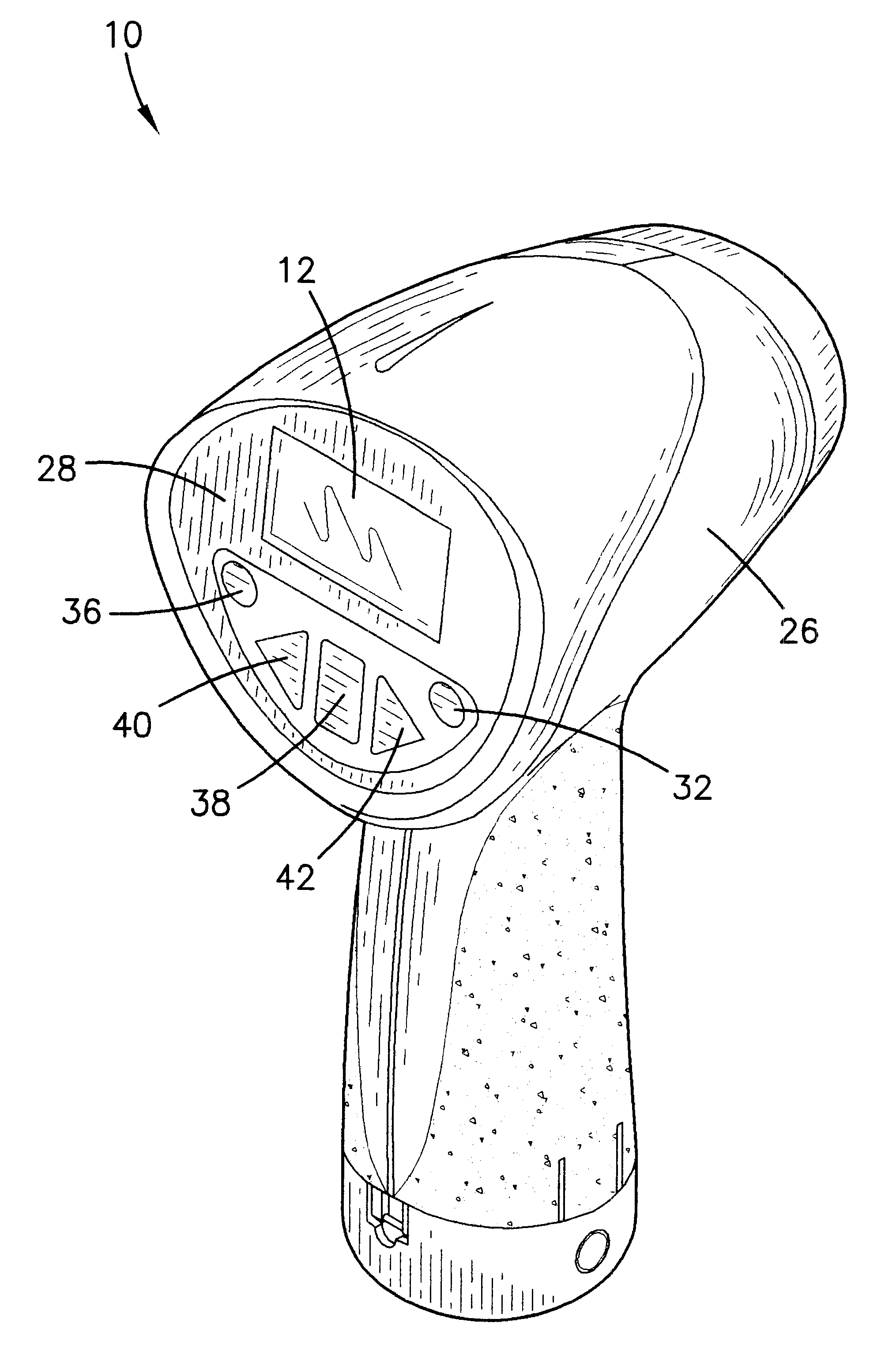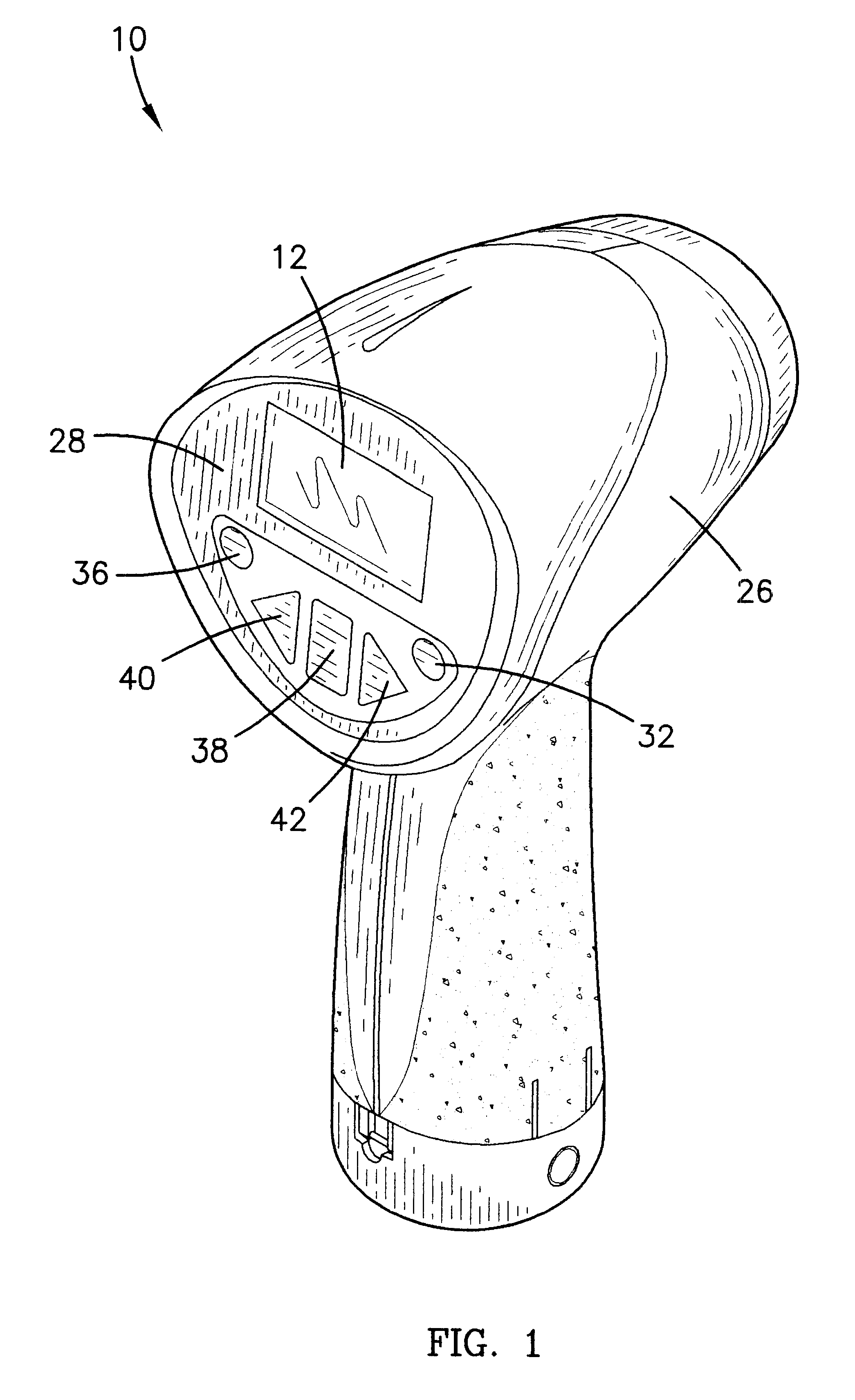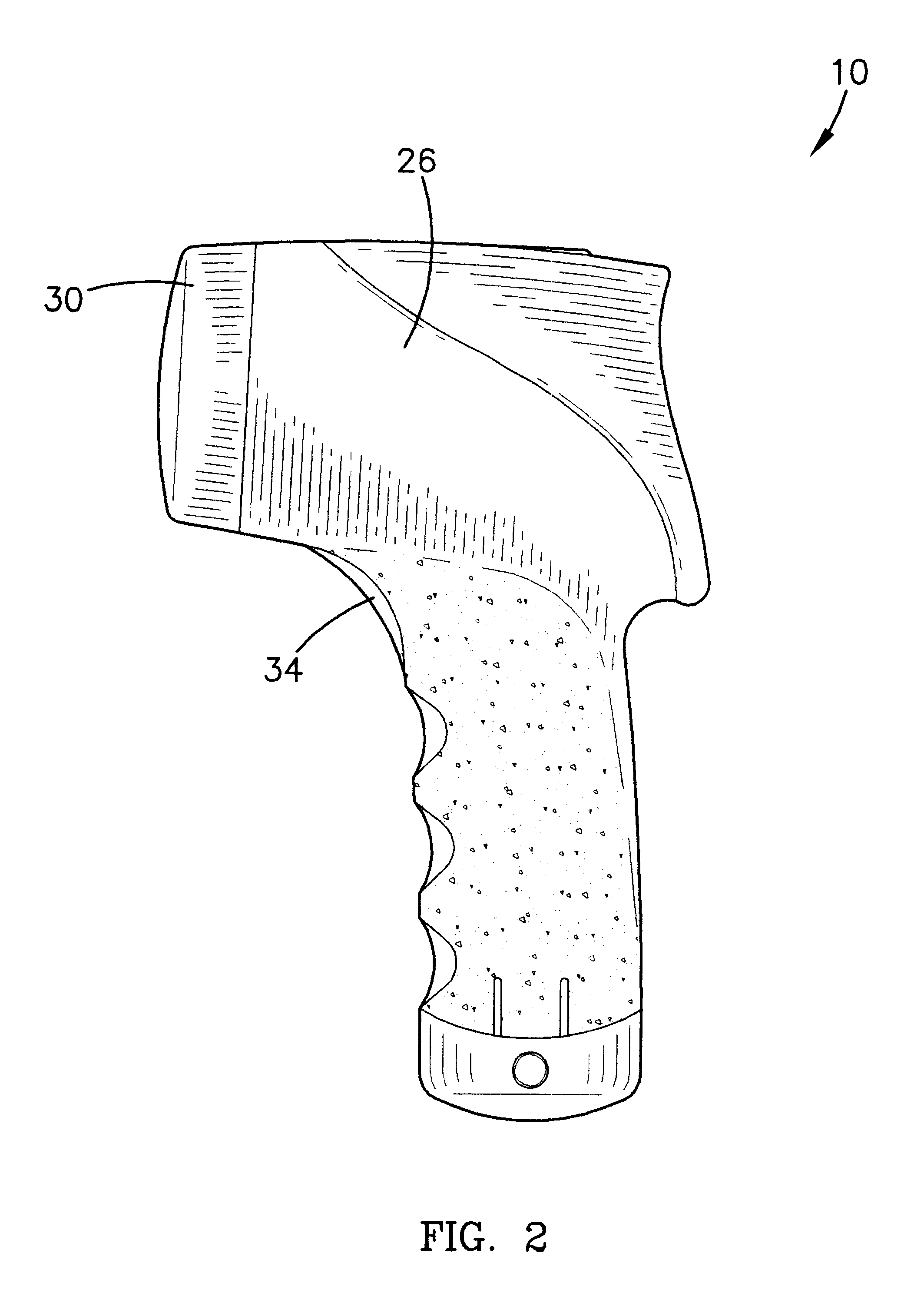Speed measurement device with statistic gathering capability
a speed measurement and statistic gathering technology, applied in the field of speed measurement devices, can solve the problems of large volume of speed measurement devices designed for use by law enforcement officers, requiring external power sources, and not being well suited to sporting events
- Summary
- Abstract
- Description
- Claims
- Application Information
AI Technical Summary
Benefits of technology
Problems solved by technology
Method used
Image
Examples
Embodiment Construction
Referring to FIGS. 1-3, a radar speed measurement device 10 is shown constructed in accordance with a preferred embodiment of the present invention. The device 10 uses radar to measure speed by emitting radar waves at a target, such as a baseball, a softball, a football, or other object. As the radar waves are reflected by the target, they undergo a frequency shift. This phenomenon is commonly known as a Doppler Shift. The magnitude of the Doppler Shift can be used to calculate a target speed, which is the speed of the target, relative to the device 10.
The device 10 emits emitted radar waves at a specific emission frequency and receives received radar waves at a slightly different reception frequency, depending upon the target speed. The emission frequency is preferably between 20 Giga-Hertz and 40 Giga-Hertz, commonly known as a K-band. For example, the emission frequency may be 24.125 Giga-hertz or 24.150 Giga-Hertz.
The device 10 broadly comprises a radar emitter 14 for emitting t...
PUM
 Login to View More
Login to View More Abstract
Description
Claims
Application Information
 Login to View More
Login to View More - R&D
- Intellectual Property
- Life Sciences
- Materials
- Tech Scout
- Unparalleled Data Quality
- Higher Quality Content
- 60% Fewer Hallucinations
Browse by: Latest US Patents, China's latest patents, Technical Efficacy Thesaurus, Application Domain, Technology Topic, Popular Technical Reports.
© 2025 PatSnap. All rights reserved.Legal|Privacy policy|Modern Slavery Act Transparency Statement|Sitemap|About US| Contact US: help@patsnap.com



